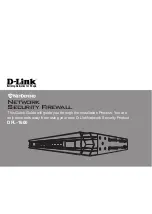
7914DiskAttach0908.fm
Draft Document for Review March 28, 2011 12:24 pm
8
IBM System Storage DS3500: Introduction and Implementation Guide
Figure 1-5 Point to Point SAS Topology
1.3 iSCSI disk attachment
iSCSI stands for
Internet Small Computer System Interface,
an Internet Protocol (IP)-based
storage networking standard for linking data storage facilities. By carrying SCSI commands
over IP networks, iSCSI is used to facilitate data transfers over intranets and to manage
storage over long distances. iSCSI can be used to transmit data over local area networks
(LANs), wide area networks (WANs), or the Internet and can enable location-independent
data storage and retrieval.
iSCSI uses TCP/IP (typically TCP ports 860 and 3260). In essence, iSCSI simply allows two
hosts to negotiate and then exchange SCSI commands using IP networks. By doing this
iSCSI takes a popular high-performance local storage bus and emulates it over wide-area
networks, creating a storage area network (SAN).
Unlike some SAN protocols, iSCSI requires no dedicated cabling; it can be run over existing
switching and IP infrastructure. However, the performance of an iSCSI SAN deployment can
be severely degraded if not operated on a dedicated network or subnet (LAN or VLAN). As a
result, iSCSI is often seen as a low-cost alternative to Fibre Channel, which requires
dedicated infrastructure except in its Fibre Channel over Ethernet (FCoE) form.
IP SANs are a cheaper alternative to FC SANs; however the lower cost of iSCSI also implies
lower performance and scalability. Encapsulation has an impact and the transfer rate is lower.
A typical Ethernet network operates at 1 Gbps, while an FC SAN can run up to 8 Gbps.
However, there are ways to address iSCSI performance:
While the host servers can use almost any Ethernet network interface card for iSCSI
traffic, this does mean that the CPUs in the host server have to run the iSCSI stack (to
perform encapsulation of SCSI commands and data). This causes CPU and memory
overhead, which can impact performance.
For increased performance, it is better to use dedicated iSCSI HBAs to process the
TCP/IP stack. This technology is known as
TCP Offload Engine (TOE)
. TOE technology
relieves the CPUs in the host server from having to process the SCSI encapsulation,
which can lead to better performance.
Ethernet transfer rate is growing. 10 Gbps Ethernet is coming and it gains wider
commercial acceptance. Migrating to 10 GbE can significantly increase the performance
of an iSCSI infrastructure.
Summary of Contents for DS3500
Page 2: ......
Page 5: ...iii Draft Document for Review March 28 2011 12 24 pm 7914edno fm ...
Page 789: ......
















































